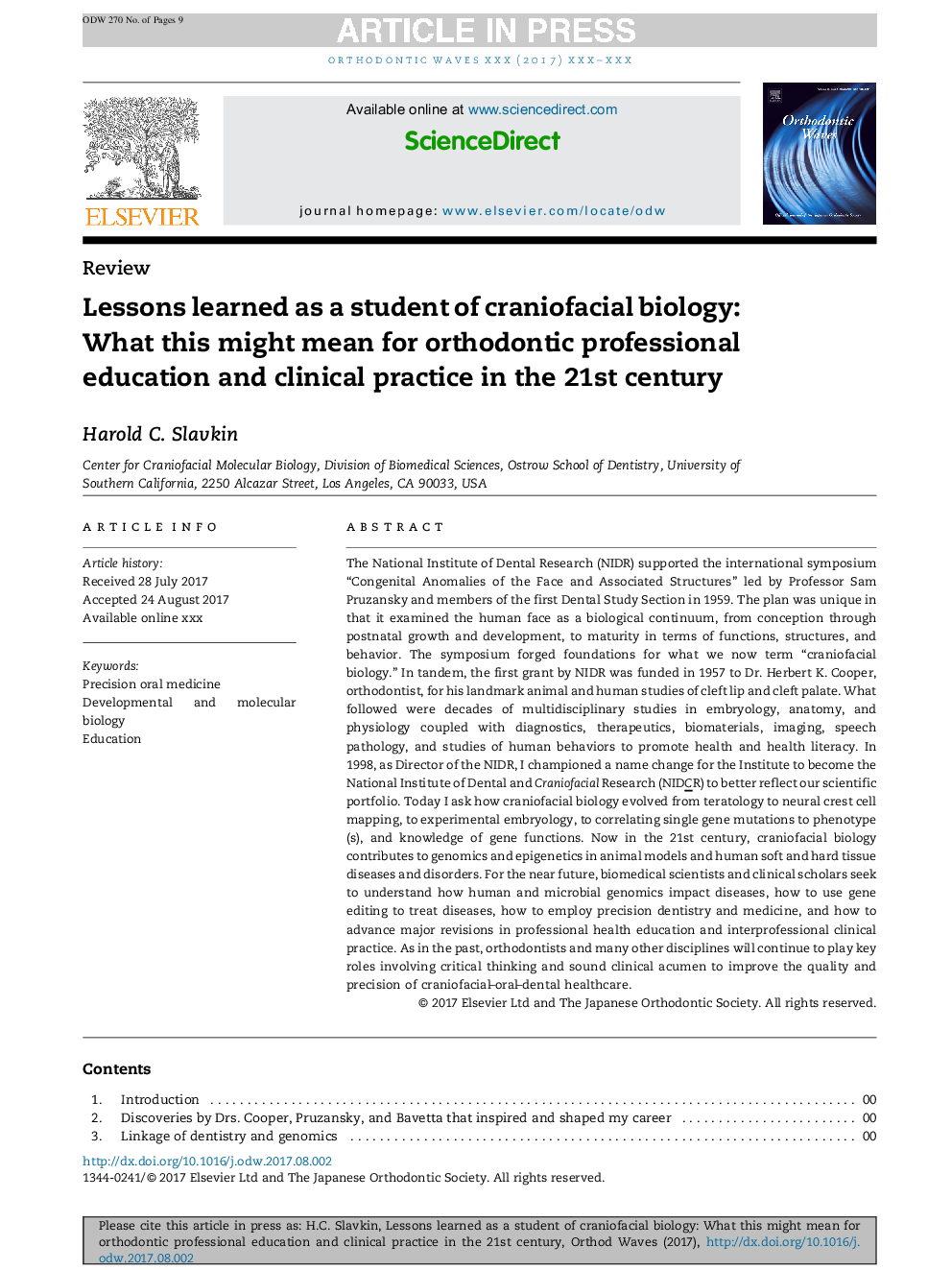| Article ID | Journal | Published Year | Pages | File Type |
|---|---|---|---|---|
| 8707972 | Orthodontic Waves | 2018 | 9 Pages |
Abstract
The National Institute of Dental Research (NIDR) supported the international symposium “Congenital Anomalies of the Face and Associated Structures” led by Professor Sam Pruzansky and members of the first Dental Study Section in 1959. The plan was unique in that it examined the human face as a biological continuum, from conception through postnatal growth and development, to maturity in terms of functions, structures, and behavior. The symposium forged foundations for what we now term “craniofacial biology.” In tandem, the first grant by NIDR was funded in 1957 to Dr. Herbert K. Cooper, orthodontist, for his landmark animal and human studies of cleft lip and cleft palate. What followed were decades of multidisciplinary studies in embryology, anatomy, and physiology coupled with diagnostics, therapeutics, biomaterials, imaging, speech pathology, and studies of human behaviors to promote health and health literacy. In 1998, as Director of the NIDR, I championed a name change for the Institute to become the National Institute of Dental and Craniofacial Research (NIDCR) to better reflect our scientific portfolio. Today I ask how craniofacial biology evolved from teratology to neural crest cell mapping, to experimental embryology, to correlating single gene mutations to phenotype(s), and knowledge of gene functions. Now in the 21st century, craniofacial biology contributes to genomics and epigenetics in animal models and human soft and hard tissue diseases and disorders. For the near future, biomedical scientists and clinical scholars seek to understand how human and microbial genomics impact diseases, how to use gene editing to treat diseases, how to employ precision dentistry and medicine, and how to advance major revisions in professional health education and interprofessional clinical practice. As in the past, orthodontists and many other disciplines will continue to play key roles involving critical thinking and sound clinical acumen to improve the quality and precision of craniofacial-oral-dental healthcare.
Keywords
Related Topics
Health Sciences
Medicine and Dentistry
Dentistry, Oral Surgery and Medicine
Authors
Harold C. Slavkin,
